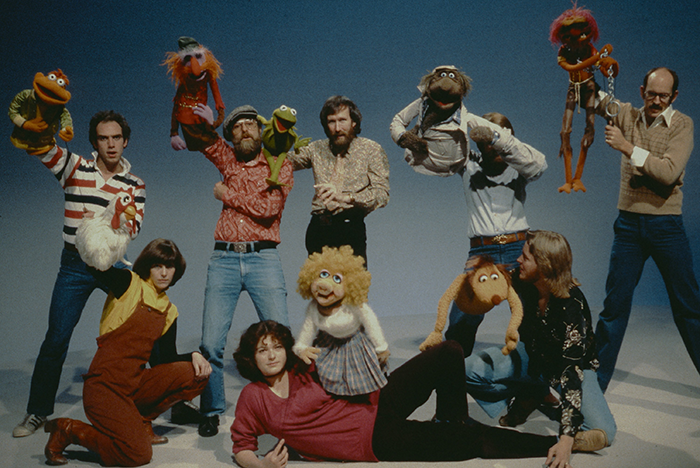Songs about rainbows and how teamwork impacts innovation

The Jim Henson Company demonstrated that it takes teamwork to keep the show going.
Image courtesy of Disney
This past week, I haven’t been able to get a song out of my head. Why are there so many / Songs about rainbows / And what’s on the other side?
A frog and a banjo, taking time during a cross-country road trip to remind us of the best parts of ourselves. The reason this wonderful tune has been playing on repeat between my ears is the debut of the documentary “Jim Henson, Idea Man” on Disney+.
The documentary follows the life of Henson as he goes from local television personality and experimental filmmaker in the ‘50s and early ‘60s to advertising darling in the late 1960s. In the 1970s, he made the pivot into starting The Jim Henson Company — a developer of generations’ worth of impactful storytelling, including the “Muppets,” “Sesame Street,” “Fraggle Rock,” “The Dark Crystal” and so much more.
Teamwork is what you need to “Start the Show”
Kermit may have been sitting on that log and strumming away by himself, but what is best about the Muppets is that they have always shown us that it is our role as a member of a team that determines whether the show will go on or not.
You don’t have a score without Rowlf the Dog. There’s no star power without Miss Piggy. Comic relief is nowhere to be found without Fozzie Bear. There’s no management of the stage without Scooter. Dr. Teeth and the Electric Mayhem are a team within a team, full of introverts like Zoot and (extreme) extroverts like Animal. You’ve got no scientific underpinning without Dr. Bunsen Honeydew and Beaker, no supporting doubt without Statler and Waldorf. No yummy snacks without the Swedish Chef, do-it-yourself ingenuity without Rizzo the Rat or stalwart authority without Sam Eagle. And without Gonzo, you’ve got no, you’ve got no — chickens, I guess?
Each Muppet owns a solo act, a few minutes of entertainment, a single note. But when they come together, a symphony is born, and it’s time to start the show. The Muppets and The Jim Henson Company are perfect illustrations of the importance of the power skill of teamwork as well as teamwork’s impact on innovation.
How teamwork helps to power innovation
And while it was Henson’s lone voice singing to us about wishing on a morning star, it was the incredible team he built and the culture of innovation they all created that made The Jim Henson Company a lasting American institution. The first Kermit the Frog was made from a Ping-Pong ball and the green felt coat Henson pilfered from his mom, made animate by his hand and arm. But the innovations in puppetry didn’t just happen with felt and body suits. The company also pushed technological innovations in their pursuit of storytelling.
By the time Pa and Ma Gorg arrived on Fraggle Rock, Henson and his “ungainly troupe of smiling, industrious hippies working together in the service of a single vision” had mastered the design of full-body puppetry and animatronic heads.
According to a fascinating case study, “Demonstrating the Audacity of Innovation at The Jim Henson Company,” “The company’s engineers and artists [explored] new ways to take puppetry to the next level with a proprietary workstation with advanced simulation capabilities driven by the company’s own animation software engine. The workstation uses a joystick and a digital glove, enabling puppeteers to manipulate a digital puppet exactly like they would with a physical puppet. Using the workstation, puppeteers can perform in a digital environment that completely replicates a three-camera, live-action video shoot.”
The case study goes into a discussion of the technical innovations in data transfer, storage and rendering that the team drove to improve productivity and decrease downtime between production and post-production.
So much of the culture of innovation and teamwork was born from Henson’s leadership style. The iconic Frank Oz talked (imagine in Ms. Piggy’s voice) about how Henson taught everyone to “accept more.” “If something goes wrong, don’t scream and yell, just accept it and move on with the next thing,” Oz says.
Dave Goelz talked (imagine in Dr. Honeydew’s voice) about the positive impact Henson had on "everybody who worked for him: the workshop, the licensing people, the marketing people, the publishing people, the creature shop people. Everybody in the company was influenced by him,” he says. “We had a reunion a few years ago where hundreds of people showed up, and it could be anybody that we worked with — so anybody on any of our crews, or in the company. And the refrain that you heard all evening from everybody, even people who had only worked there for a year, was, ‘That was the best job I ever had.’”
Victoria Labalme, director of “Muppet Guys Talking” and Frank Oz’s spouse, talked about a key theme in Henson’s approach to teamwork. “He trusted people to figure it out. He believed in people’s capabilities. He would trust that if he lost his hands he would figure out a new career. There was just this faith in people and life.”
The role of teamwork in innovation
A 2009 meta-analysis of 30 years' worth of research on innovation found that there are many components related to teamwork that help to create a work setting in which it can flourish. Those factors include:
- A common understanding and commitment to team objectives.
- Interdependence of individual and team goals.
- Support at the team and supervisor level in attempts toward innovation, including encouraging risk and expecting failures.
- A shared desire for excellence.
- Team cohesion to support creating a psychologically safe environment.
- Strong communication within the team and from the whole team to external stakeholders.
Effective teamwork is the groundwork for impactful collaboration and the innovations that collaboration enables. A 2023 Berkley ExecEd article, “Teams That Collaborate, Innovate,” describes the subtle differences between teamwork and collaboration as “not just the coordination of tasks or reaching a shared goal, but ... a focus on co-creating ideas and solutions, leveraging collective intelligence, and creating shared value. When it’s working well, collaboration fosters a deep intellectual synergy — something not always accomplished by teams.”
The article breaks down four keys to successful team collaboration:
- Building a dynamic team. Does your team have a diverse variety of strengths, perspectives and intelligences?
- Fostering a collaborative mindset. Do team members model collaborative behavior? Are they effective active listeners? Can you celebrate accomplishments as well as share and receive constructive feedback?
- Harnessing the art of possibility. Does the team encourage risk-taking, lifelong learning, curiosity?
- Using the right tools. Does your team have the right project management, documentation and communication systems in place to make the management of team activities and deliverables seamless?
How you can improve your teamwork power skills
In my June 2023 article “Stepping to the subtle dance of successful teamwork,” I outlined some simple steps individuals can take to improve their teamwork skills.
- Make sure your team members communicate frequently.
- Make sure everyone feels they have a voice and feels truly listened to.
- Make sure you take time to talk about non-work topics to increase connection.
- Go outside of the group to learn about new things, and then bring back what you learned and teach your team members about it.
- Make sure you enable an environment where everyone feels safe to be willing to take risks without fear of retribution.
And while these steps may be simple, they are not always easy. When deadlines are fast-approaching, maybe it’s easier to simply say what you want from your team members but not really listen to their response. Maybe a risk ends in failure and costs your organization a significant amount of money. Maybe your workload makes non-work-related discussions hard to generate or maintain. I mean, even frogs can get angry and upset sometimes with the way team activities are going. Part of accepting failure is accepting the fact that sometimes we will fail. It happens. We’re human, even if some of us are bears, pigs, eagles and whatever Gonzo is.
Innovation and teamwork are always people-driven
Jim Henson left us 34 years ago, too soon at the age of 53. But he lived his life in a way that put innovation and teamwork at the center of his world. Henson didn’t always know where his ideas and the innovations that the Jim Henson Company brought to the world originated though.
“I don’t know exactly where ideas come from,” Henson said. “It’s just a matter of us figuring out how to receive the ideas waiting to be heard.”
Teamwork was at the core of all the work that the Jim Henson Company accomplished. Henson talked about how any project “is not done by one person. It’s done by a lot of people. I love this whole collaborative aspect. When it works well, you end up with something better than any of us started out to do.”
Teamwork and innovation. Each exhibit concrete steps we can take to help foster tangible results. Each are skill sets we can bring to any project or product we work to bring to life, to impact our customers and other stakeholders. But let’s not forget the intangible elements that a frog on a log, singing his wisdom out loud, reminds us to consider:
Who said that every wish / Would be heard and answered / When wished on the morning star? / Somebody thought of that / And someone believed it / Look what it's done so far / What's so amazing that keeps us stargazing / And what do we think we might see?
Adam Bazer, MPD, senior director of knowledge product development at the American Society for Health Care Engineering.





